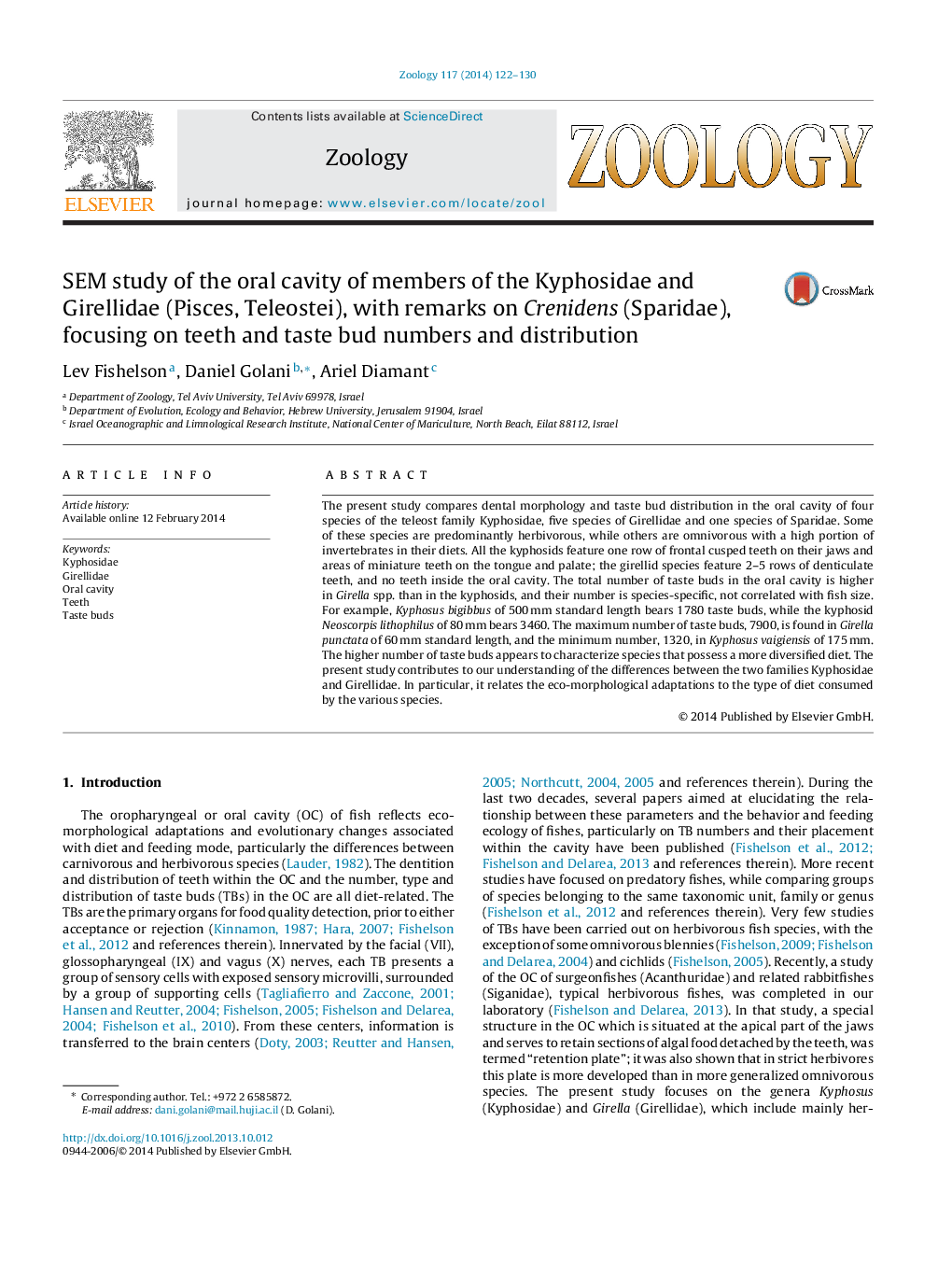| Article ID | Journal | Published Year | Pages | File Type |
|---|---|---|---|---|
| 5896411 | Zoology | 2014 | 9 Pages |
Abstract
The present study compares dental morphology and taste bud distribution in the oral cavity of four species of the teleost family Kyphosidae, five species of Girellidae and one species of Sparidae. Some of these species are predominantly herbivorous, while others are omnivorous with a high portion of invertebrates in their diets. All the kyphosids feature one row of frontal cusped teeth on their jaws and areas of miniature teeth on the tongue and palate; the girellid species feature 2-5 rows of denticulate teeth, and no teeth inside the oral cavity. The total number of taste buds in the oral cavity is higher in Girella spp. than in the kyphosids, and their number is species-specific, not correlated with fish size. For example, Kyphosus bigibbus of 500Â mm standard length bears 1780 taste buds, while the kyphosid Neoscorpis lithophilus of 80Â mm bears 3460. The maximum number of taste buds, 7900, is found in Girella punctata of 60Â mm standard length, and the minimum number, 1320, in Kyphosus vaigiensis of 175Â mm. The higher number of taste buds appears to characterize species that possess a more diversified diet. The present study contributes to our understanding of the differences between the two families Kyphosidae and Girellidae. In particular, it relates the eco-morphological adaptations to the type of diet consumed by the various species.
Keywords
Related Topics
Life Sciences
Agricultural and Biological Sciences
Animal Science and Zoology
Authors
Lev Fishelson, Daniel Golani, Ariel Diamant,
